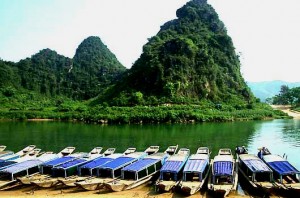
I neglected to mention in yesterdays post that Hoi An that they now have a diving and boat tour to Cham island available. There are also some historic and interesting places to see are the Japanese bridge and an old Chinese house where silk is made and embroidered. Expect a little bit of hard selling.
Travelling through the DMZ We could see rice fields still riddled with round holes made by the bombing of the area. There is almost no visible evidence that there was ever any fighting. A single tank husk sits on a hill beside the road, every removable piece scavenged and sold as scrap.
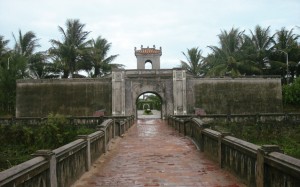
Vinh Moc Tunnels – Phong Nha Caves
Located on the northern side of the DMZ along the coast of the South China Sea, the villagers of Vinh Moc found themsselves tragically positioned in one of the most heavily bombed areas of North Vietnam. In order to escape this bombardment, the villagers constructed approximately 2.8 km of underground tunnels which they used as a refuge to survive the bombings.
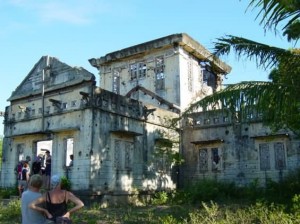
The tunnels were built in three levels (12, 15 and 23 meters deep) and took thirteen months to complete. Three hundred people lived intermittently in the tunnels during 1966 to 1971. Sixty-two families made the tunnels their home and amazingly seventeen babies were born here and spent the first years of their lives underground.
Phong Nha has the longest underground rivers, the largest caverns and passageways, the widest and prettiest sand banks, and the most astonishing rock formations in the world. Phong Nha translates as “The wind’s fang”.
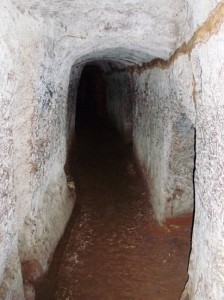
Entering this cave is like venturing into the mouth of a giant beast. The main cave system contains 14 chambers, linked by an underwater river that runs for 1.5km. Secondary corridors branch off in all directions. The Outer Cave and some of the Inner Caves have roofs that tower between 25 and 40 meters above the water level.
Ben Hai River-Hien Luong Bridge:
Ben Hai River also has another name: Rao Thanh River. The upper reach of the river is on a stretch of 100 kilometers to meet the sea at Cua Tung (Tung River mouth). The widest part of the river is about 200 meters. The portion where the Hien Luong Bridge spans across is about 170 meters.
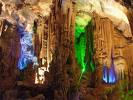
Hien Luong steel Bridge was first built by French sappers in 1950. Earlier the only means of transport across the river was by boat. The bridge was 178 meters long and had seven girders. The birders. The bridge surface was paved with wood planks.
Under the Geneva Agreement on Vietnam signed in 1954 Ben Hai river on the 17th parallel has been selected as a temporary demarcation line separating the country regrouping purposes. The DMZ area
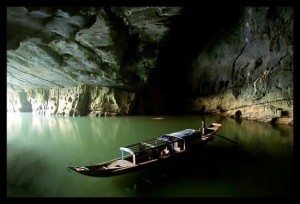
had Hien Luong Bridge divided into two parts w hich served as the border gates to both sides.
Nowadays Hien Luong Bridge has become a historic landmark and a great tourist attraction. The existence of the bridge reflects the miraculous strength of the Vietnamese people throughout the course of the 20-year-long resistance war national independence, freedom and rail independence, freedom and reunification of the entire Vietnam.
Quang Tri ancient citadel The Quang Tri citaedl was built in 1824 by the order of King Minh Mang. It is located in Thach Han village, Hai Lang district, initially the citadel was a work of earth. Four years later it was rebuilt with
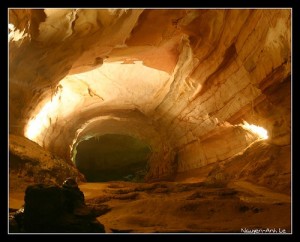
bricks.
In 1972 during the phasing out of the American intervention in the Vietnam Was, the liberation army seized the citadel from the Sai Gon troops. The stationing liberation troops had to suffer the heaviest and longest artillery and bombing attacks ever launched by the Saigon army to recapture the citadel. The citadel located in an enclosed area of about two square kilometers had to endure the velocity of bombing and artillery explosion which was equal to eight times the velocity of the atomic bomb dropped by the US in Hiroshima in Japan in 1954.
At present visitors to the site of the ancient Quang Tri Citadel can still see
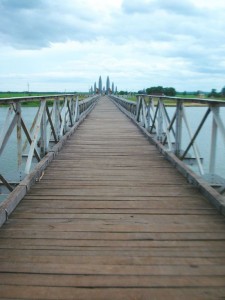
several pieces of brick wall of the citadel. They are all what have been left after the 36-day battle back in 1972. One can imagine these standing brick walls as some sort of war memorials to those fallen combatants in the fight at the Quang Tri citadel.

The title should be Phong Nha not Nga ..chu.
Best Regards
Oops. I will fix